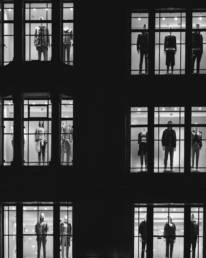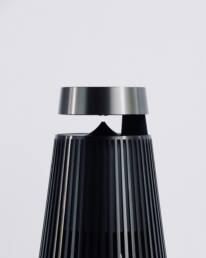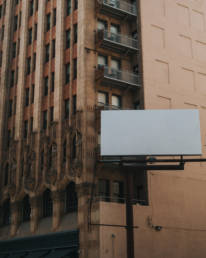DE-CLUTTERING VISUAL NOISE
As we stand on the cusp of a new year, the graphic design continues to evolve at a rapid pace, fueled by technological advancements, cultural shifts, and creative innovation. In the dynamic landscape of visual communication, designers are constantly seeking fresh perspectives and new techniques to captivate audiences and convey powerful messages. From minimalist aesthetics to cutting-edge technology, here are five graphic design trends poised to make waves in 2024, shaping the way we see and interact with the world around us.
N°1: Futuristic Minimalism: Embracing Simplicity
In an era marked by information overload and sensory clutter, futuristic minimalism emerges as a beacon of clarity and sophistication. This trend embodies the ethos of less is more, embracing clean lines, bold typography, and a restrained color palette to create designs that feel sleek, modern, and effortlessly chic. By stripping away extraneous ornamentation and focusing on essential elements, designers can convey information with clarity and precision, fostering a sense of calm amidst the chaos of the digital landscape.
Futuristic minimalism is characterized by its emphasis on space and simplicity, allowing for maximum impact with minimal distraction. Whether used in branding, web design, or editorial layouts, this aesthetic exudes a sense of confidence and refinement, making it ideal for brands seeking a contemporary identity that resonates with modern audiences.
Emphasizing space and simplicity. Saying more by showing less.
N°2: Augmented Reality Integration: Bridging the Gap Between Physical and Digital Realms
As technology continues to advance at a rapid pace, augmented reality (AR) emerges as a transformative tool in the realm of graphic design. By overlaying digital content onto the physical world, AR integration offers endless possibilities for interactive storytelling, immersive experiences, and enhanced engagement. From dynamic product demonstrations to location-based marketing campaigns, designers are harnessing the power of AR to create captivating experiences that blur the lines between reality and imagination.
One of the key advantages of AR integration is its ability to provide users with a deeper level of engagement and interactivity. By allowing them to interact with digital content in real-time, AR experiences create a sense of presence and immersion that traditional media cannot replicate. Whether used in retail, entertainment, or education, AR integration opens up new avenues for creativity and innovation, paving the way for a more dynamic and interactive future.
N°3: Eco-Conscious Design: Navigating Towards a Sustainable Future
In an age of increasing environmental awareness, eco-conscious design emerges as a pressing imperative for graphic designers around the globe. From reducing carbon emissions to minimizing waste, designers are embracing sustainable practices and materials to minimize their environmental footprint and promote a more sustainable future. Whether it’s using recycled paper in print projects, reducing digital waste through minimalist design principles, or opting for eco-friendly packaging materials, eco-conscious design encompasses a range of strategies aimed at minimizing environmental impact while maximizing visual impact.
Beyond its environmental benefits, eco-conscious design also resonates with socially conscious consumers who are increasingly seeking out brands that prioritize sustainability. By aligning with eco-friendly values and practices, brands can build trust and loyalty among environmentally conscious consumers, fostering long-term relationships and driving positive change in the marketplace.
Recycled paper in print projects, reducing digital waste through minimalist design principles, or opting for eco-friendly packaging materials, are trends we're continuing to see at the start of 2024.
N°4: Retro Futurism: Nostalgia Meets Innovation in Graphic Design
Drawing inspiration from the past while envisioning the future, retro futurism emerges as a captivating fusion of nostalgia and innovation in graphic design. This trend combines vintage aesthetics with futuristic elements, resulting in designs that feel both familiar and otherworldly. By remixing iconic design elements from past decades with modern touches, designers can evoke a sense of nostalgia while offering a fresh perspective on the future, creating a visual language that transcends time and space.
Retro futurism is characterized by its playful juxtaposition of old and new, blending retro-inspired typography, color palettes, and imagery with futuristic motifs and technology. Whether it’s re imagining classic sci-fi themes or reinventing vintage advertising styles, retro futurism offers a rich tapestry of visual inspiration for designers looking to evoke a sense of nostalgia and wonder in their work.
It's about creating a sense of movement and vitality. This connects to how wellness is a major focus area for consumers.
N°5: Fluid and Organic Shapes: Embracing Dynamism and Vitality in Design
In contrast to the rigid lines of traditional design, fluid and organic shapes are taking center stage in 2024, imbuing designs with a sense of movement and vitality. By embracing curves, waves, and abstract forms, designers can create visuals that feel dynamic, fluid, and alive, inviting viewers to explore and engage with the content in a more organic way. Whether used as backgrounds, illustrations, or typography elements, fluid shapes add a sense of energy and rhythm to graphic design projects, creating visual experiences that are both captivating and immersive.
Fluid and organic shapes offer designers a versatile palette of visual elements to work with, allowing for endless possibilities in terms of composition, layout, and storytelling. Whether used in digital interfaces, print collateral, or environmental graphics, fluid shapes can transform static designs into dynamic, interactive experiences that capture the imagination and leave a lasting impression on audiences.
Final Thoughts
As we look ahead to 2024 and beyond, these five graphic design trends offer a glimpse into the future of visual communication, reflecting the evolving tastes, technologies, and cultural currents shaping our world. Whether it’s embracing minimalist aesthetics, integrating augmented reality, championing eco-conscious practices, exploring retro futurism, or embracing fluid shapes, designers have an array of tools and techniques at their disposal to captivate audiences and convey meaningful messages in the digital age. By staying attuned to emerging trends and pushing the boundaries of creativity, graphic designers can continue to shape the visual landscape of tomorrow, inspiring, engaging, and delighting audiences around the globe.
Coralie Myrne
Coralie Myrne is a seasoned journalist with a keen eye for sustainable fashion trends, serving as the voice of conscience for "EcoStyle Insights." Combining her love for writing with a passion for environmental advocacy, she travels the world uncovering the stories behind eco-friendly designs and the innovators shaping the industry. With a commitment to authenticity and a dedication to promoting conscious consumerism, Coralie empowers readers to make informed choices while looking effortlessly stylish.










